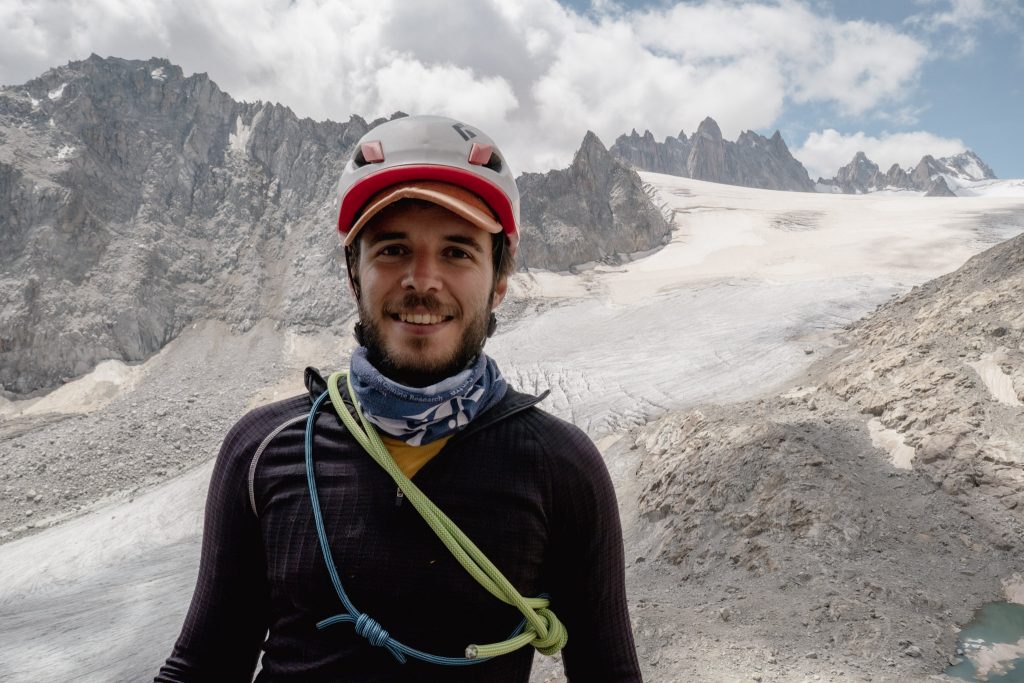
Did you choose your profession or did it choose you?
It is difficult to say. I don’t think I have ever had a moment where I said that I wanted to be a scientist, but I’ve always enjoyed doing research. As a student, I loved spending time in the lab, developing experimental set-ups, and doing measurements. Then, for my PhD, I decided to bring the lab out to the field and perform measurements in remote locations like the Southern Ocean. For me, this was a great combination and certainly one of the reasons why I decided to stay in research.
What attracted you to join LAPI?
I was looking for new challenges and wanted to change my research topic and learn new skills. The LAPI offered all of this; its research focus is highly interdisciplinary, and it is involved in many different and exciting projects.
Can you speak about the projects you are currently working on and other ones in the past?
During my PhD, I investigated the formation mechanism of new aerosol particles from different precursor gases in polar regions. Then, I moved to the EERL (a different lab at EPFL), where I contributed to developing a system for vertical measurements of aerosols and trace gases; we deployed it in the alps and Alaska. Now, with the LAPI, I am studying mineral dust. In particular, how atmospheric processing can change the properties of dust and modify its impact. Mineral dust is a very interesting system; it is the most abundant aerosol type in the atmosphere (by mass), and it is involved in many different processes with far-reaching impacts (e.g., climate, ecosystems, human health). Yet, there is still so much we need to learn about the effect of atmospheric aging on dust properties. It is a very cool topic to work on. Plus, we will do measurements in the Mediterranean region, so we will certainly have warmer and more pleasant conditions than in my previous experiences!
What have been some of your biggest challenges?
The beginning of my PhD was a big challenge. I only had three months to learn how to use a mass spectrometer (I barely knew what a mass spectrometer was before starting) and design an inlet system to operate it on a Russian icebreaker in the remote Southern Ocean. It was a tough time, but luckily, I had a great supervisor and a very nice team to support me!
What have been some of your biggest successes?
Our campaign in the Southern Ocean went well, and we collected interesting data. Given what I mentioned before, it was a nice success. Generally, I see all my previous field campaigns as important successes. It is not easy to prepare for field measurements in remote locations, and there is no guarantee of success. So, it is always good to return home with interesting new data and some nice experience memories!
You split your time between teaching and research. How do you view these two roles?
I love teaching and outreach activities in general. It is an important part of our responsibility as scientists to help the new generations develop critical thinking and share the (little) knowledge we possess. However, as a postdoc, most of my time is spent doing research, and teaching is only a minor part.
What do you enjoy to do, outside of science and research?
I love spending time outdoors, mainly in the mountains. My favorite activities in summer are climbing and mountaineering, while in winter, I do a lot of backcountry skiing. For me, being out in nature is a great way to reset my mind and find new energies to get ready for my working week!
Where is the most interesting place you’ve been?
It is not an easy choice. I’ve been very lucky and visited many interesting and unusual places. If I really have to choose I would say that the central Arctic Ocean is probably the most interesting. The landscape is a never-ending expanse of ice and water, but it’s never boring. The ice is constantly changing and can take a myriad of different shapes and colors; it’s just amazing.
A free thought for the end?
Don’t take yourself too seriously.